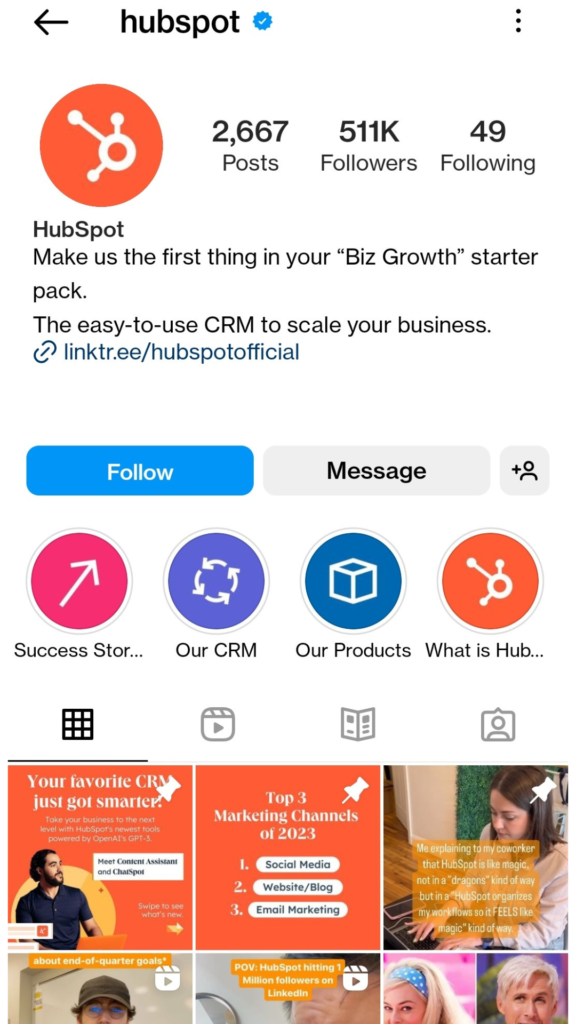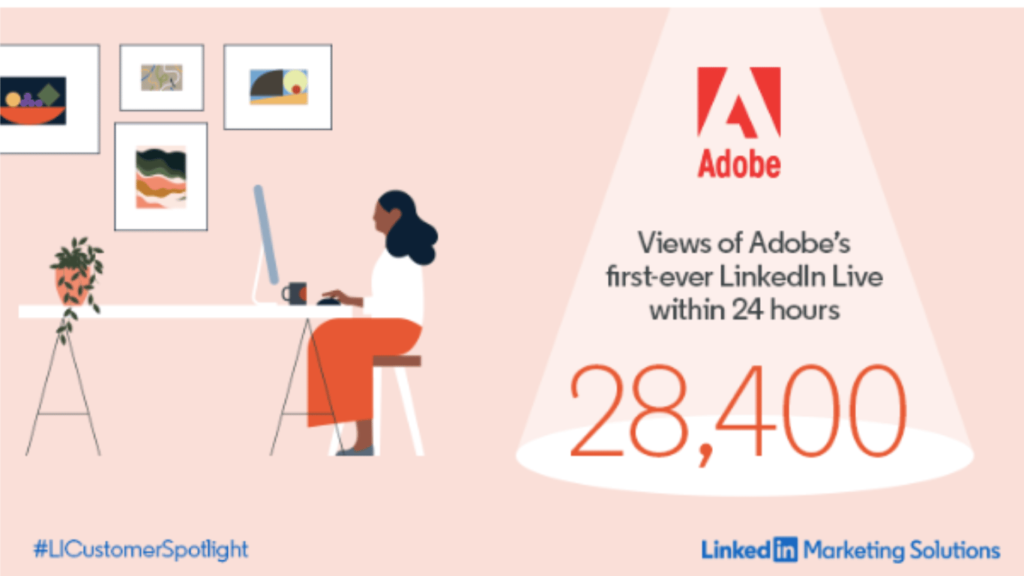Master B2B Social Media Marketing with These 7 Tips & Tricks

Manav J
||
August 1, 2023
Social media marketing has become pivotal for every business looking to succeed today, including B2B companies. With over 4.2 billion social media users worldwide, platforms like LinkedIn, Twitter, Facebook, Instagram, Instagram Threads, and YouTube offer immense opportunities to connect with your target audience. Effective social media marketing strategies can help B2B brands build awareness, generate leads, and drive sales.
But nailing B2B social media marketing requires a strategic approach. You need to leverage the right social media marketing tools for your business, create content tailored to your buyers’ needs, and track performance to refine your efforts. In this blog, we’ll cover the top B2B social media marketing strategies you should follow and the platforms you need in your stack to see results.
With the right social media marketing strategy focused on value, relevance, and metrics, you can make it work for your B2B brand in 2023 and beyond. Let’s delve into the tips and tricks you need to know.
Tip 1: Focus on the right platforms
Not all social media platforms are equal when it comes to B2B social media marketing. You need to focus your efforts on where your target buyers and industry influencers actively spend their time.
For most B2B brands today, the core platforms you should prioritize include:
- LinkedIn: With over 740 million users, LinkedIn is essential for reaching professional audiences. Use LinkedIn to establish thought leadership, join industry discussions, and connect with prospective clients.
- Twitter/ Instagram Threads: Great for real-time conversations and engagement with influencers. Also use Twitter for customer service, sharing updates, and driving website traffic.
- Facebook: Despite being seen as more consumer-focused, Facebook still offers big B2B marketing potential through dedicated business pages, community building, and paid ads.
- YouTube: Video content is booming. YouTube presents opportunities to share demos, behind-the-scenes, and educational content to engage customers.
For example, Mailchimp extensively uses YouTube and LinkedIn to publish educational and humorous video content as well as demonstrate their email marketing platform. This helps them build awareness and relationships with potential B2B customers.
Tip 2: Humanize your brand
B2B buyers want to do business with real people, not faceless corporations. Humanizing your brand helps prospects connect with and relate to your company on a more personal level.
Some ways to humanize your B2B brand on social media include:
- Employee Advocacy: Highlight team members sharing their expertise and perspectives.
- Behind-the-Scenes: Give a peek into your company culture with photos/videos from the office.
- Executive Spotlights: Let C-suite showcase their experience and thought leadership.
- Customer Spotlights: Share real customer stories and testimonials.
For example, Slack uses its social media presence to highlight its friendly, innovative culture and experts. It shares fun office photos, employee spotlights, as well as relevant pop culture references that business users can relate to. This humanized approach helps Slack connect with its audience.

Tip 3: Educate with thought leadership
Education is key for effective social media marketing for small businesses and large enterprises. By consistently publishing valuable, relevant content you can establish domain authority and thought leadership for your brand.
The content you create and share should aim to provide solutions, insights, and best practices related to your industry. Some types of educational content that work well include:
- How-to guides and tutorials
- Case studies
- Industry research and reports
- Webinars and presentations
- Interviews with experts
- Infographics and visual content
For example, HubSpot uses its social platforms, blogs, and YouTube channel to position itself as a thought leader in inbound marketing and sales. They regularly publish educational content like marketing strategy tips, growth hacking videos, tech updates, and more. This wealth of helpful content helps attract their target audience.
Tip 4: Use paid social ads
While organic content is important, you can amplify your social media marketing results with paid advertising. Social platforms like LinkedIn, Twitter, and Facebook all offer powerful options to reach your ideal customers with ads.
Some of the most effective B2B paid social media marketing strategies include:
- Targeted Lead Gen Ads: Attract prospects with gated offers like ebooks or webinars.
- Retargeting Ads: Remarket to site visitors and subscribers to drive conversions.
- Event Promotion: Increase registrations and turnout for your webinars or live events.
- Brand Awareness Campaigns: Broaden your reach and get on new prospects’ radars.
For example, IBM uses highly targeted LinkedIn ads to promote their latest enterprise technology offerings like cloud, AI, and security. The ads reach decision-makers in their industries of focus.
Tip 5: Track and measure results
To refine your B2B social media marketing, you need to closely monitor performance and analyze data-driven insights. Make sure to track key metrics like:
- Engagement: Likes, shares, comments, clicks, etc.
- Reach: Impressions and total followers.
- Conversions: Lead sign-ups and sales from social referrals.
- Customer Sentiment: Feedback and reactions to your content.
Based on these insights, you can identify both your best-performing and underperforming content. You’ll see which platforms and tactics work best for your goals.
For example, Adobe uses its integrated analytics capabilities to gain data-driven insights across channels, including social media. This allows them to continually optimize their social strategies and content calendars based on real-time feedback and metrics.
Tip 6: Optimize social media images
Visual content is critical for cutting through the noise on social media. To maximize results, you need to optimize your images for each platform’s best practices.
Start by using high-quality designs that align with your brand style guide. Images should communicate your key messages and value proposition visually.
You also need to tailor image sizes and formats for each channel:
- Facebook/Instagram: Use square 1:1 images and vertical 4:5 images. 1200 x 1200 pixels is an ideal size.
- Twitter: Horizontal rectangles in a 16:9 aspect ratio perform best. 1024 x 512 pixels is a good size.
- LinkedIn: Horizontal rectangular images are ideal, around 1200 x 628 pixels.
Moreover, every image should have a strong call-to-action, as well as concise, compelling text overlaying the visual. Monitor engagement and CTR to see which images resonate most with your audience.
Continually run A/B tests
using different images, captions, and CTA copy to boost performance.
For example, Buffer analyzes image performance across social channels. They know that square 1:1 images work best on Instagram, while horizontal images perform better on Twitter and LinkedIn. This informs their visual content strategy. They also test images, headlines, and captions to improve engagement.
Tip 7: Use conversational marketing
Actively participating in conversations on social media is a key opportunity for B2B brands. By responding to comments, questions, and feedback in real-time, you can provide better customer service, build relationships, and increase engagement.
To implement conversational marketing effectively:
- Monitor brand mentions and relevant discussions across your social channels. Use social listening tools to stay on top of conversations.
- Swiftly respond to any customer service issues or questions. This provides public visibility that you are listening and eager to help.
- Join discussions and give your expert opinions on industry topics your audience cares about.
- Share user-generated content like positive reviews or testimonials that mention your brand.
- Use a genuine, human voice when engaging people – avoid overly promotional language.
For example, Hootsuite has dedicated social media managers who actively monitor conversations and engage with followers daily. They jump into relevant discussions about social media marketing topics by offering helpful tips, answering questions, and sharing resources. This conversational approach helps showcase their expertise while also strengthening customer relationships.
Final Word
Implementing an effective B2B social media marketing strategy takes effort, but the rewards can be immense. By focusing on the right platforms, optimizing your brand presence, creating valuable content, utilizing paid ads, and analyzing data – you can connect with customers and prospects to drive real business results.
As you craft your approach, keep your audience’s needs and preferences central to inform your strategy and messaging. Test and refine your tactics based on performance indicators. And don’t forget the power of visual content and real-time conversations to cut through the noise.
With consistency, value, and human connection, your B2B brand can build fruitful relationships with your community. This social media goodwill translates into improved awareness, consideration, and sales over the long-term.
Start where you are, leverage available tools and insights, and don’t be afraid to experiment. Commit to continuous optimization and learning. With the right B2B social media marketing strategies and foundations in place, you can achieve social media success.



